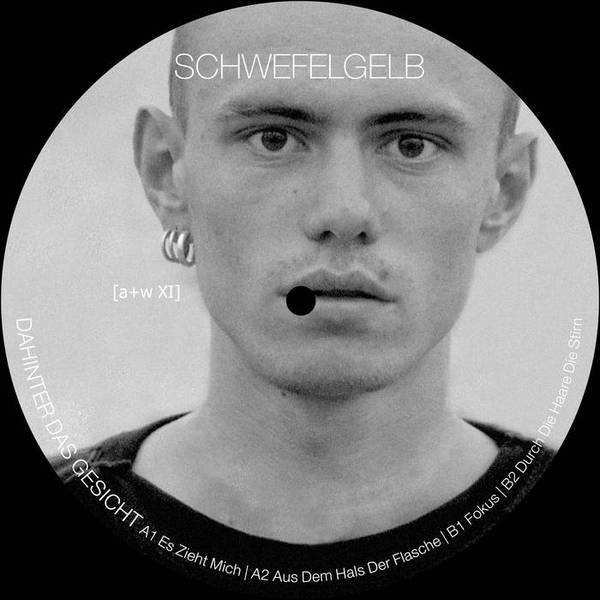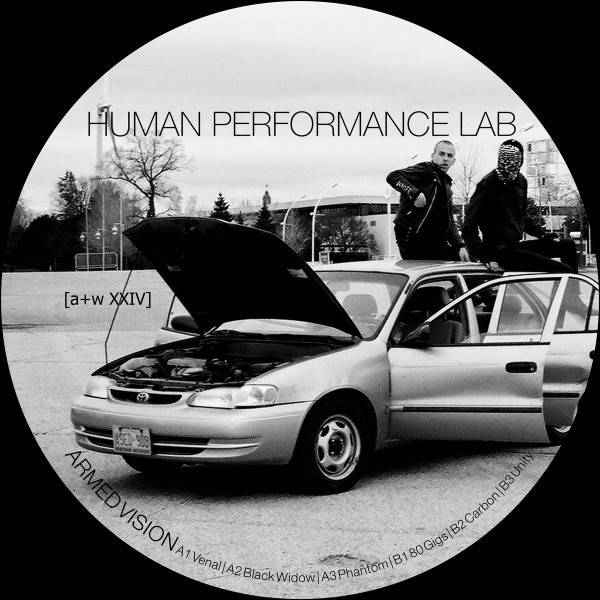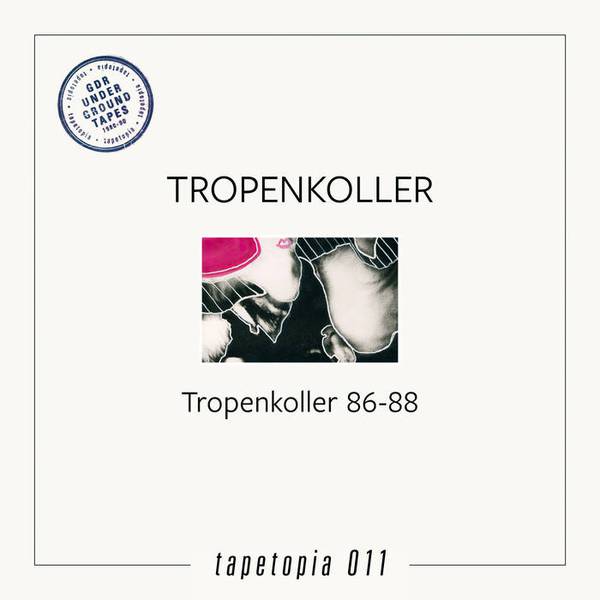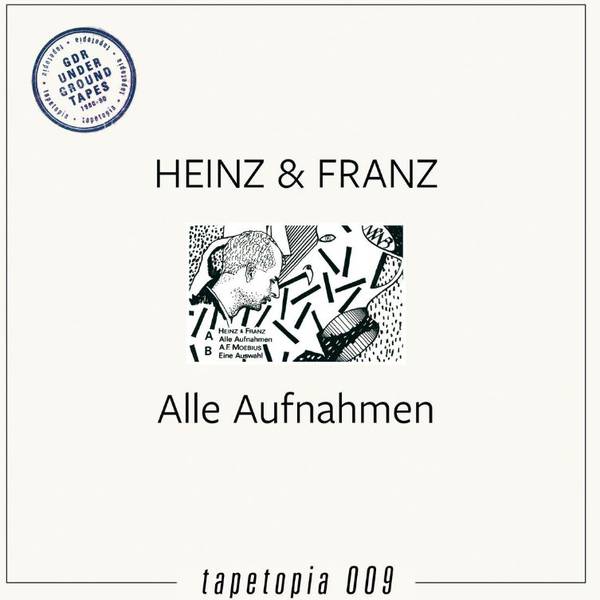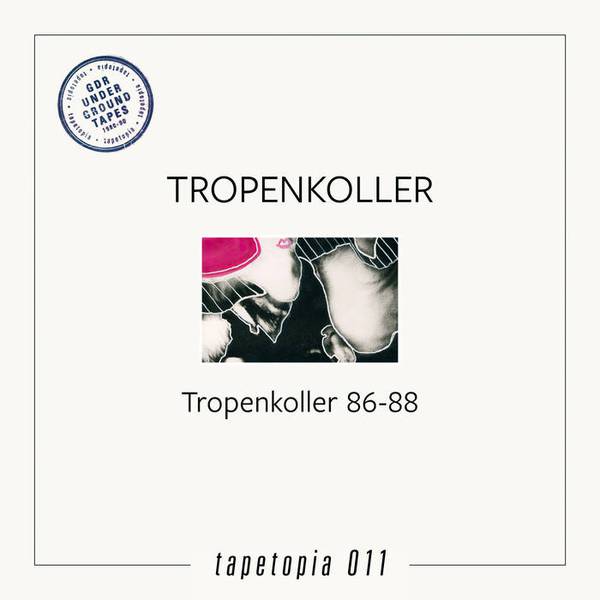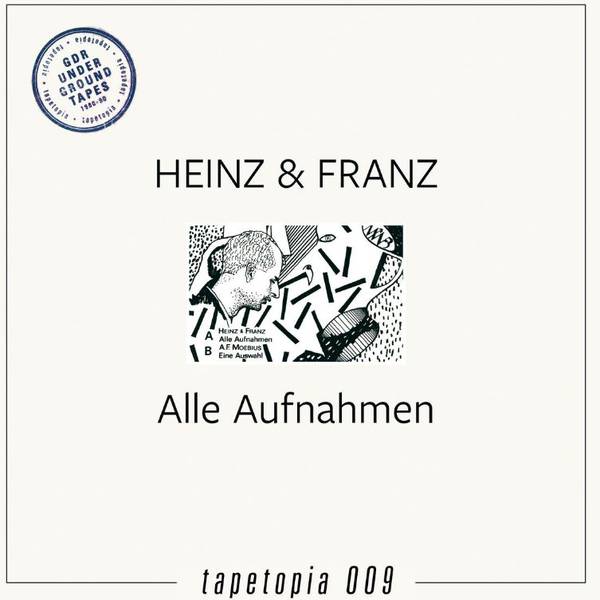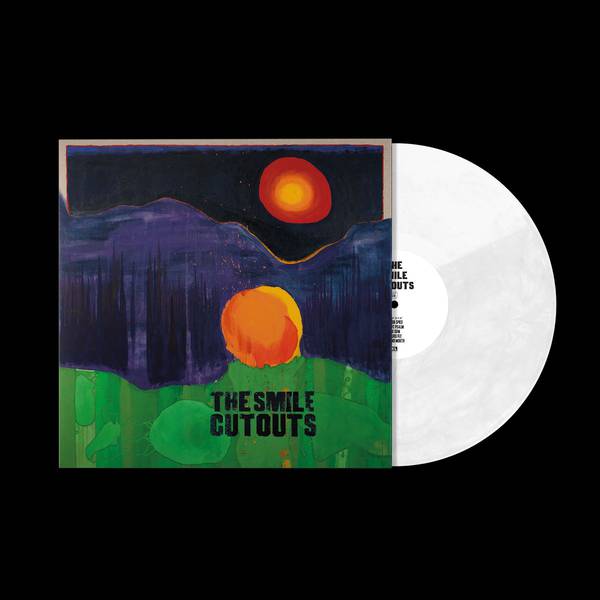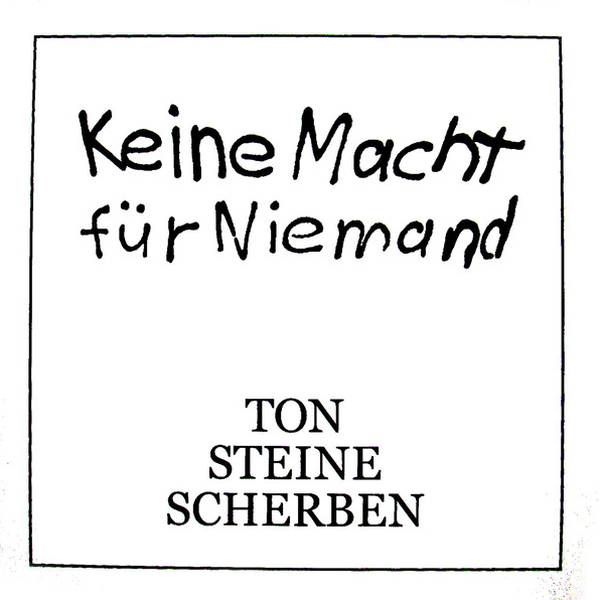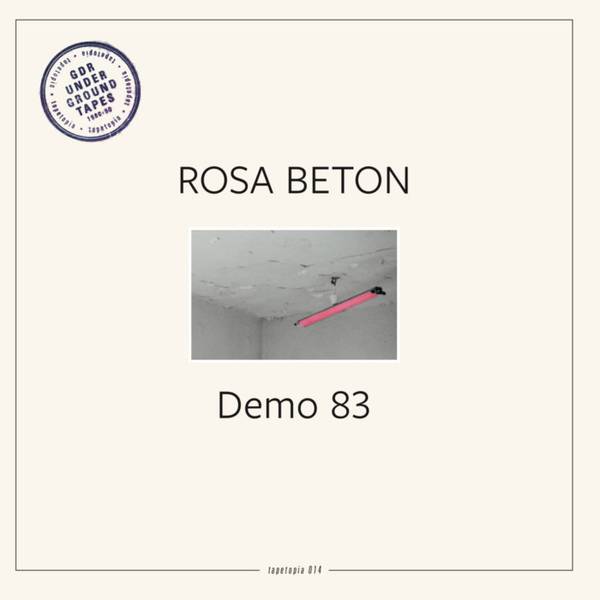
Tax included, Shipping not included
A tape with the rather factual title “Rosa Beton – Demo 83” gained currency in 1983, albeit among an inner circle, or as it says in a lexical note on the band: Rosa Beton “achieved beyond-regional fame in and around Berlin”. Unlike some other bands that were merely rumoured to exist, this name was widely recognized in the East Berlin punk scene and the demo tape was received with some delight. It had been made in the suburb of Hönow, or more precisely in music enthusiast Thomas Wagner’s childhood bedroom. The band was less a classic combo than a short-lived pro- ject run, for a brief underground season, by 16-year-old Wagner and Ronald Mausolf, who was known as “Mausi” and had just come of age.
An old clunker of a four-track machine served as an impor- tant nutritional supplement for the duo, allowing bass and vocals to be overdubbed separately. For a project without a professional background, especially for an illegal punk band in the East, this conventional procedure was clearly exceptional. Punk bands would usually record vocals and instruments simultaneously and on a cassette recorder. Recording gear was not readily available in the GDR, and it was disproportionately or prohibitively expensive. The adversities that had to be overcome in starting up a punk band were certainly challenging for teenagers. Rooms for rehearsals were few and far between despite wide- spread vacancies, and public space was taboo thanks to the state. Concerts, whether in flats and studios or under the protection of the Protestant church, remained rare events and, moreover, risky; starting with the party-loyal neighbour alerting the People’s Police as if there were a war on, to the ever-present “digging activity” of the Stasi. The only planned appearance by Rosa Beton never materi- alised. Whether it was the goddesses of fate who averted a show or the Stasi who prevented it can no longer be reconstructed. In any case, Rosa Beton never played live and thus joined a long list of GDR punk bands that, in the early 1980s, did not make it out of illegality into a public sphere, not even into a conspiratorial one.
ausi compensated for the band’s lack of live performances by at least distributing a few copies of the demo tape. Among others, at the Kult, the Kulturpark Plänterwald, which provided an initiation field for the Berlin punk scene and a hotspot with a pull beyond it. The punks adapted the Kulturpark to their understanding of an amusement park. They would thrash about to Schlager music and pogo to third-rate Ostrock bands, make fun of overwhelmed provincials, hang out and exchange half-baked ideas as superior knowledge. In between, the punks liked to ride the chain carousel, there was a certain liking for chains. The Kulturpark management made quite a fuss about the riot the punks put on. Initially they were banned from the chain carousel, then, when the punks switched to bumper cars, they were banned from the bumper cars, then from the roller coaster, and finally from the ghost train.
Unlike Mausi, Wagner was not at home in the punk scene. He felt no obligation to the statutes of their clientele or to the colour palette of punk. Like purple to the emperor, the colour pink was reserved for the Sex Pistols. In the colour theory of punk rock, pink is used if at all to refer to Jamie Reid’s iconographic artwork of “Never Mind The Bollocks”. As an admixture to concrete, the soft blur of pink in the name of a punk band was hardcore. But the contrastive pairing of emotion and hardness, of pink and grey concrete, confronted the anaemic grey of the East with a colour and with an emotion, so as to make the national depression become visible and audible. Rosa Beton got by without any punk-typical outbursts of hatred and belonged to the enlightened type of German punk that spared its listeners punk clichés of the sort of “Polizei SA-SS”. Rosa Beton‘s lyrics alone indicated that their content demanded for cli- chés to be destroyed, no matter what style they resulted from. At times, Wagner’s lyrics resembled reflective short stories, and the songs themselves seemed downright sentient in the staccato sound system of East Berlin.
Thomas Wagner’s tendency towards complex lyrics even- tually led to complex sounds as well, the radicalism of which consisted in the refusal of genre standards. In 1987, he created the long-lasting experimental project Herr Blum. It was accompanied by a myriad of side projects, most famously Tom Terror & Das Beil, which kicked one of many notches in Wagner’s artist vita in 1989. in 1985, Mausi became the drummer for Reasors Exzesz, a hard- core band that had emerged from Betonromantik. Along with Betonromantik, Planlos, Rosa Extra or Sendeschluß, Rosa Beton belonged to the same first generation of East Berlin punk bands that today casts a woefully short shadow when the media spotlight is directed at punk rock in the GDR. For once, it was not the Stasi that was responsible for the end of Rosa Beton, but individual developments; the band faded away in the no-man’s land between punk and post-punk. The forking path of the two band members is a parable for the fact that punk in its early stages was a bundle of diverging forces; Wagner radicalised artistically, Mausolf politically. Yet the eternal question “Are you still punk today?” is only of interest to kitchen anthropologists who have no concept of the essence of radicalism. It is not those biographies that are the most punk who remained inhibitingly loyal to punk, but those that moved furthest away from punk, because otherwise “No Future” proves to be “Punks Not Dead”.
1983 fand ein Tape mit dem unaufgeregten Titel „Rosa Beton – Demo 83“ weite Verbreitung – allerdings im engsten Kreis oder wie es in einer lexikalischen Notiz zur Band heißt: Rosa Beton „erreichte in und um Berlin überregionale Bekanntheit“. Im Gegensatz zu Bands, die nur als Gerücht in Erscheinung traten, kursierte der Name also vernehmbar durch die Ostberliner Punkszene und das Demo-Tape wurde mit einigem Entzücken aufgenommen. Es entstand im Vorort Hönow, genauer im dort gelegenen Kinderzimmer des Musikenthusiasten Thomas Wagner. Die Band glich weniger einer klassischen Combo als einem kurzlebigen Projekt, das der 16-jährige Wagner mit dem gerade volljährig gewordenen Ronald Mausolf, genannt „Mausi“, für eine kurze Untergrundsaison betrieb.
Eine alte Mühle von Vierspurmaschine funktionierte als ein wichtiges Nahrungsergänzungsmittel des Duos, denn Bass und Gesang wurden als Overdubs aufgenommen. Für ein Projekt ohne professionellen Hintergrund, zumal für eine illegale Punkband im Osten, dürfte dieses herkömmliche Verfahren außergewöhnlich gewesen sein. Punkbands nahmen Gesang und Instrumente zumeist synchron mit einem Kassettenrecorder auf. Equipment war in der DDR zum einen nicht ohne weiteres zu haben, zum anderen unverhältnismäßig bis unerschwinglich teuer. Überhaupt, die Schwierigkeitsgrade, welche es mit der Inbetriebnahme einer Punkband zu überwinden galt, waren für Teenager anspruchsvoll. Räume zum Proben waren trotz flächendeckenden Leerstands rar, der öffentliche Raum wiederum von Staats wegen tabu. Konzerte blieben, egal ob in Wohnungen und Ateliers oder unter dem Schutz der evangelischen Kirche, seltene Ereignisse und darüber hinaus riskant; angefangen vom linientreuen Nachbarn, der die Volkspolizei wie im Kriegsfall alarmierte, bis hin zur allgegenwärtigen „Wühltätigkeit“ der Staatssicherheit. Der einzige geplante Auftritt von Rosa Beton kam nicht zustande. Ob die Schicksalsgöttinnen ein Konzert abwendeten oder die Staatssicherheit es verhinderte, ist nicht mehr zu rekonstruieren. Jedenfalls hat Rosa Beton nie live gespielt und reiht sich damit in eine lange Liste von DDR-Punkbands, die es zu Beginn der 80er-Jahre nicht aus der Illegalität in eine Öffentlichkeit schafften, selbst wenn diese konspirativ gewesen wäre.
Mausi überbrückte die fehlende Livepräsenz der Band wenigstens insoweit, einige Kopien des Demo-Tapes zu streuen. Unter anderem auf dem „Kult“, dem Kulturpark Plänterwald, der ein Initiationsfeld der Berliner Punkszene war und ein Hotspot mit Sogwirkung bis in die überregio- nalen Kreisverbände. Die Punks passten den Kulturpark ihrem Verständnis von einem Vergnügungspark an. Man
Klientel noch der Farbpalette von Punk verpflichtet. Wie Purpur dem Kaiser, so war die Farbe Rosa den Sex Pistols vorbehalten. Rosa leuchtet in der Farbenlehre des Punk- rock höchstens als Zitat von Jamie Reids ikonografischem Artwork der „Never Mind The Bollocks“. Als Beimischung zum Beton war der Weichzeichner Rosa im Namen einer Punkband die Härte. Doch das Gegensatzpaar von Gefühl und Härte, von Rosa und grauem Beton, konfrontierte das anämische Grau des Ostens noch mit einer Farbe und mit einer Emotion, damit die volkseigene Depression sichtbar und hörbar wird. Dabei kam Rosa Beton ohne jede punktypische Hass-Aufwallung aus und zählte zum aufgeklärten Typus von Deutschpunk, der seine Hörer mit Punkmustern à la „Polizei SA-SS“ verschonte. Allein die Texte von Rosa Beton deuteten darauf hin, dass die Inhalte nach der Sprengung von Mustern verlangten, egal aus welchem Stil sie resultierten. Zuweilen glichen Wagners Lyrics reflektierenden Short Stories, die Songs selbst wirkten regelrecht empfindsam im stakkatohaften Soundsystem Ostberlin.
Thomas Wagners Tendenz zu komplexen Texten mündete schließlich in komplexe Sounds, deren Radikalität in der Verweigerung gegenüber Genrestandards bestand. 1987 schuf er das langlebige Experimentalprojekt Herr Blum. Es wurde von einer Unzahl an Nebenprojekten flankiert, am bekanntesten dürfte Tom Terror & Das Beil sein, wel-ches 1989 eine von vielen Kerben in Wagners Künstlervita schlug. Mausi stieg 1985 als Drummer bei Reasors Exzesz ein, einer Hardcoreband, welche aus Betonromantik hervorgegangen war. Neben Betonromantik, Planlos, Rosa Extra oder Sendeschluß zählt auch Rosa Beton zur ersten Generation Ostberliner Punkbands, die heute einen beklagenswert kurzen Schatten werfen, wenn der mediale Spot auf Punkrock in der DDR gerichtet wird. Für das Ende von Rosa Beton war ausnahmsweise nicht die Staatssicherheit verantwortlich, sondern individu- elle Entwicklungen; die Band verhallte im Niemandsland zwischen Punk und Postpunk. Der sich gabelnde Weg der beiden Bandmitglieder ist ein Gleichnis dafür, dass Punk in seinem frühen Stadium ein Bündel an auseinanderstrebenden Kräften war; Wagner radikalisierte sich künstlerisch, Mausolf politisch. Dabei interessiert die ewig gleiche Frage „Bist du heute noch Punk?” nur die Küchenanthropologen, die sich keinen Begriff vom Wesen der Radikalität machen. Nicht diejenigen Bio- grafien sind am punkigsten, welche Punk eine entwicklungshemmende Treue hielten, sondern jene, die sich am weitesten von Punk entfernten, denn andernfalls bewahrheitet sich „No Future“ als „Punks Not Dead".
Details
Genre
Release Date
08.06.2023
Cat No
tapetopia 014
Produkt- und Herstellerinformationen
